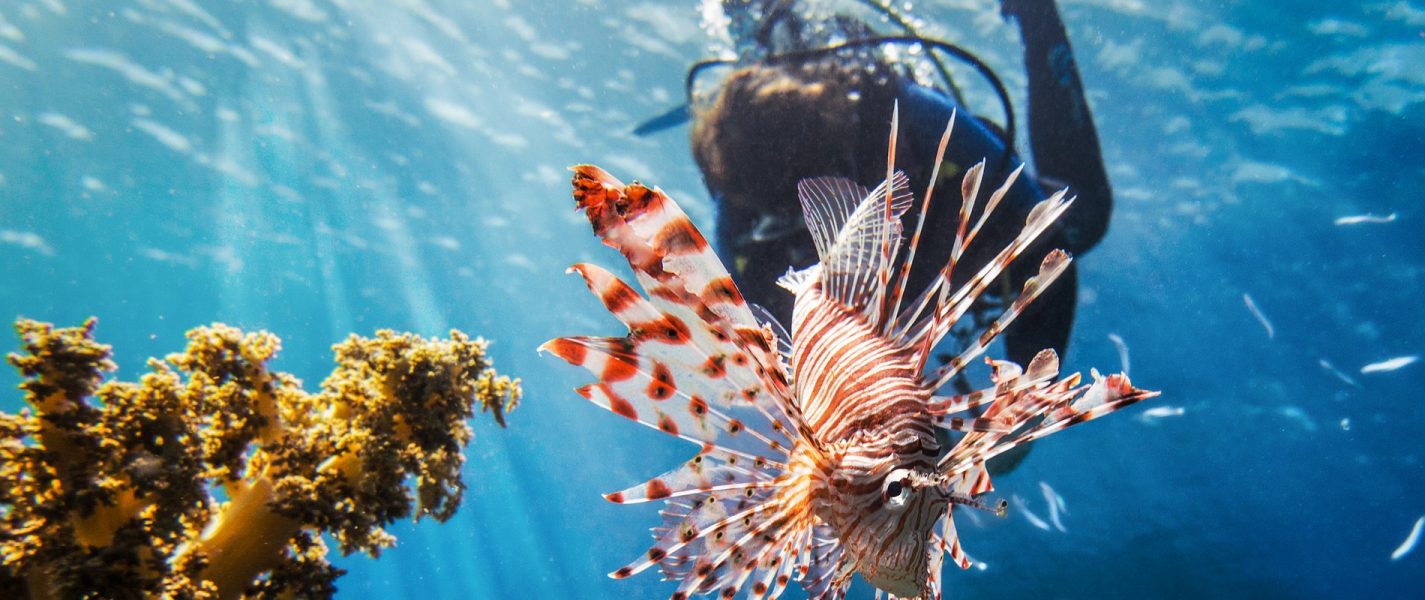While not much wants to eat lionfish, they, on the other hand, have pretty big appetites and eat a pretty diverse range of species. In fact, they are affecting the food web enough to be considered one of the most serious threats to marine ecosystems.
If you have ever taken a scuba dive trip to pretty much any saltwater destination, you’ve probably seen red-striped lionfish. These beautiful creatures are rather startling, and also dangerous. They also happen to be one of the biggest menaces in the Caribbean. Wondering what all the hype is about? Here’s what you need to know about these beautiful pests.
What are lionfish?
While living in the Caribbean, I became acquainted with these conspicuous fish and learned to hate them just as much as the local environmentalists. You can’t usually eat them, you can’t touch them, and you certainly can’t appreciate the havoc they wreak on coral reefs. So what are lionfish?

If you want to get nerdy, you might like to know that these creatures are scientifically known as Pterois, a genus with a dozen species. Lionfish are poisonous creatures with red and white stripes. They sport an impressive “mane” of fins that look like something you might see on a gaudy parade float.
As pretty as those fins are, they aren’t something you want to get close to. The fin rays are tipped with venom like a poison dart, and it apparently hurts. A lot. Fortunately, I can’t describe the pain to you from personal experience.
Where do they come from?
Lionfish are supposed to live in the Pacific Ocean, but they’ve hitchhiked their way all over the world. The major problem with this situation is that lionfish don’t have too many predators. With the exception of the bravest of sharks, eels, and massive groupers, nothing wants to face those spines!

While not much wants to eat lionfish, lionfish have pretty big appetites. They also eat a pretty diverse range of species. In fact, they are affecting the food web enough to be considered one of the most serious threats to marine ecosystems.
Divers can help reduce invasive Lionfish populations to help save the reefs we love so much! Here are some ways you can help on your next dive:
- Order it off the menu.
While it’s not a great idea to catch and cook your own (the poison on the fins is pretty gnarly), you can order it from top-level chefs! The more these fish are eaten, the faster
overfishing can do its dirty work -in a useful way, for once. - Try your hand at spearfishing
Most places have laws against spearfishing while in scuba gear, but you can strip down to a snorkel, mask, and wetsuit for the sake of hunting these pests! Take some time to reduce the population in the next reef you visit. Be sure to check spearing laws in the area and maybe find someone to give you some local tips. You may even find a Lionfish spearing club you can join for the weekend!
- Report sightings
Depending on where you are diving, it might be helpful to report lionfish. Florida divers
can use a reporting app to let authorities know where they are found!
Now that you’re in the know about what to do, you can do your part to protect reefs and reduce invasive species. Next time you see a





















